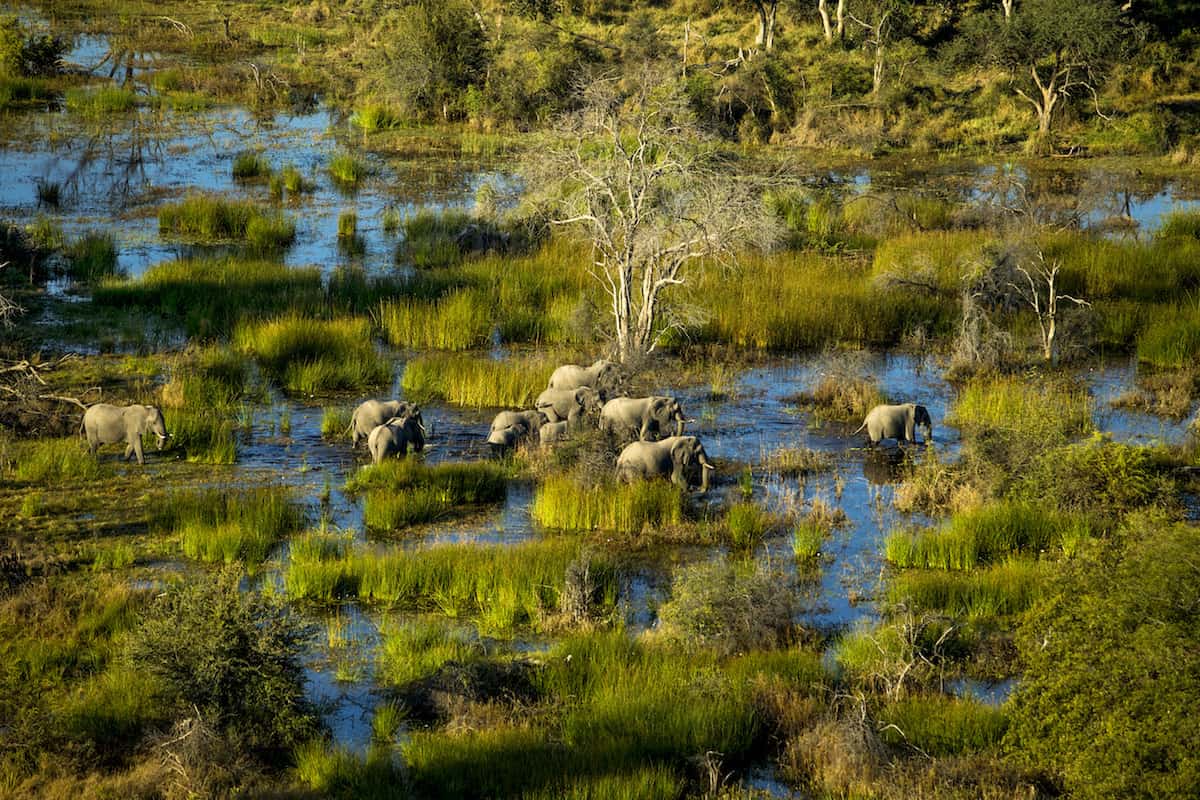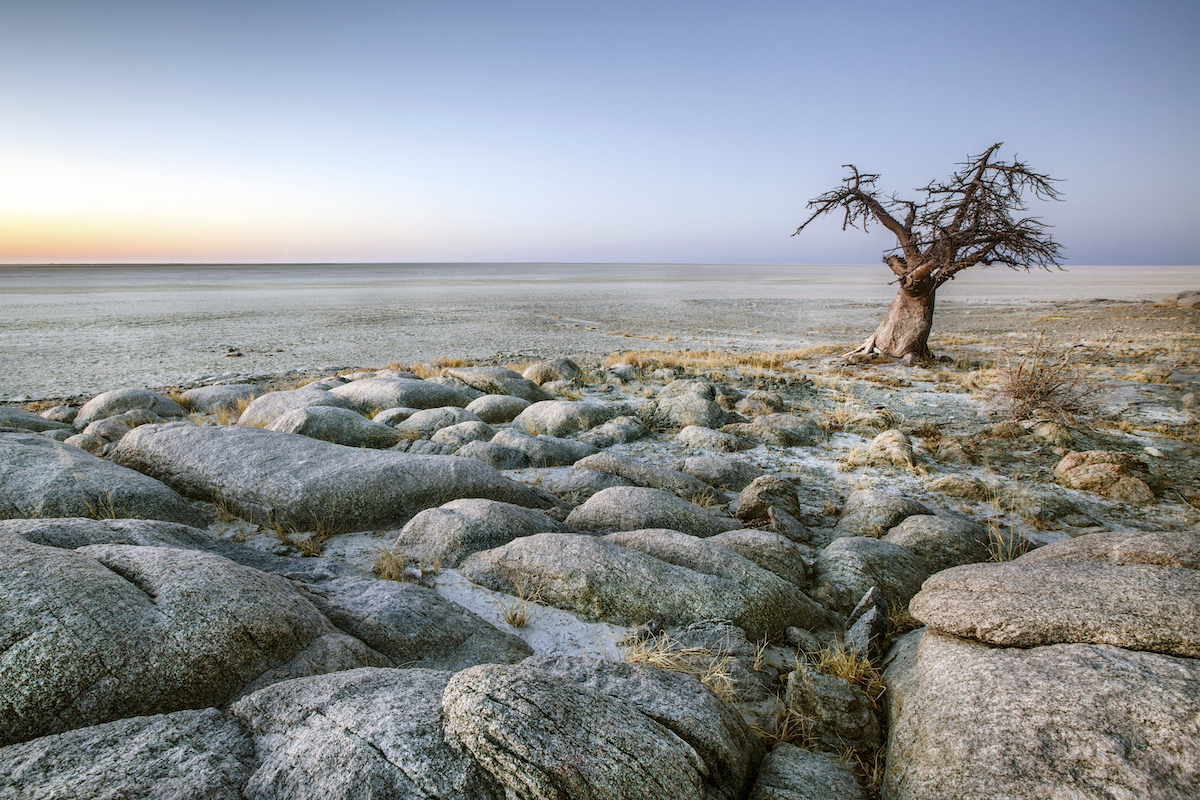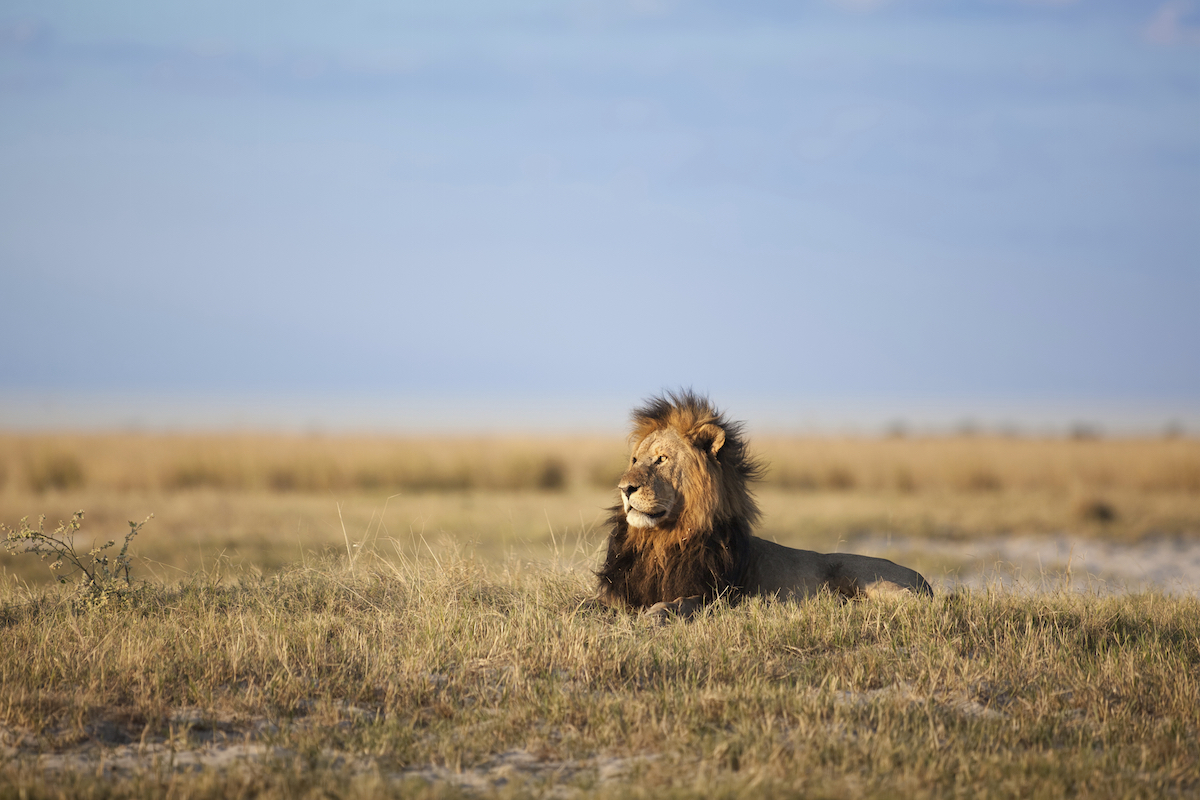HOW THE COUNTRY’S REMARKABLE NATURAL FEATURES FORM THE PERFECT BACKDROP FOR A PHOTO SAFARI
Botswana is a remarkably unique travel destination and one that’s particularly well-suited for photography. It boasts of a massive range of natural landscapes: rivers and streams, swamps, deserts, woodlands, and salt pans. There is an extraordinary abundance of wildlife, including the African Big Five. Distinctive flowers and fauna border crystal clear waterways swarming with tiger fish. The beauty of the landscape begs to be captured by aspiring photographers; it is a photo safari dream. Here are the top 3 reasons why, as a photography enthusiast, you need to experience Botswana (right now!):
1. The Panhandle
The Panhandle is fed by the Okavango River and flows year-round with enough water to always float wooden canoes perfect for photo safaris. These boats, called mokoros, glide through the deep channels as experienced locals escort you along the liquid paths. Fault lines in the Earth’s crust have caused the narrow S-bends of the river to spread out, and form the shape of a frying pan’s handle, which is how the spot received its name. Vast numbers of palm and papyrus trees border the flowing water, forming a luscious habitat of reeds for over 400 bird species. With patience and a keen eye, you will see skimmers, egrets, storks, kingfishers, warblers and more.
The Panhandle is also known for its legendary fishing. It is the best location continent-wide for seeing tiger fish and barbel. Keep the changing seasons in mind- between January and February, fishing in the Panhandle is off-limits due to breeding. During August, the high water levels begin to recede, resulting in (boat) loads of fish swarming main channels. This overflow of bait lures tiger and catfish alike into prime locations for fly-fishing.
The Panhandle’s unique combination of swamps, streams and lagoons is the perfect match for any traveler seeking where most tourists never go. It is 70 kilometers of true wilderness and just the beginning of the natural treasures waiting to be discovered during a Botswana photography workshop.
2. The Delta
The Okavango Delta is not man’s territory- it is Mother Nature’s. To come here is to enter the animal kingdom. Leopards slink up high branches to feed on the carcasses of their prey. Lion prides stalk and kill the young or weak. Aggressive hippos mate and protect their offspring. The strong survive, big cats are king, and humankind is not a part of the food chain.
During summer, warm beams of light splay between palms and papyrus lining the Okavango River’s waterways. The wet season’s abundant rains invite 13,000 local plant species to flourish and bloom. April turns to May, and so the wet season fades to the dry. Grasslands emerge where cool water once flowed, lions and leopards appear around waterholes dotted with zebra and wildebeest.
Islands rest between swamps and streams. Some are lush with woodland, others dry as bone and covered in sand, whispering in the wind. Wild dogs roam among native flora and fauna, yapping as they hunt. The Delta is a sacred oasis in the Kalahari Desert, an ecosystem bereft of the meddling of woman or man. To visit here is to come upon the wild, and experience what life once was before human society made the world its own.
Find out more about our upcoming Botswana Photography Workshop!
3. The Makgadikgadi Pans
The Okavango is the only river in the world to feed into dry land as opposed to sea, which culminates to such a distinctive biosphere. The Kalahari Desert is miles upon miles of untouched sand and fossils. The Makgadikgadi Salt Pans cover 10,000 km of the desert. Wildlife that can survive here is scarce. Families of meerkats scuttle among zebras and wildebeest that migrate through after heavy rains while big cats follow in search of prey.
The Soa Pan is a huge breeding ground for Greater Flamingos. They come with the wet season, along with other birds such as Great White Pelicans, and tend to take the breath away from anyone who is lucky enough to see them in such bountiful numbers.
There is no earthly landscape comparable to the beauty and mystery of the Makgadikgadi Pans. The overwhelming sense of being perfectly happy with who and where you are will astound you as the silence of the desert surrounds you.
Why is Botswana So Expensive?
Traveling to Botswana comes with a price tag, and you may be wondering why. The easiest way to explain is through simple logistics. Across Africa, there are many wonderful photo safaris worth your while. But uniquely, Botswana offers a true wilderness experience; one where you’ll be guided by experts, and where you won’t be surrounded by masses of travelers. Safari lodges in Botswana are extremely exclusive- and, like anywhere in the world, exclusivity comes at a price. Also, consider how much is included when you pay these high prices. Meals, drinks, accommodation and game drives are often a package deal.
If this has provoked your travel urges, find out more about our Botswana Photography Workshop, guided by BBC presenter and workshop leader Trai Anfield.







